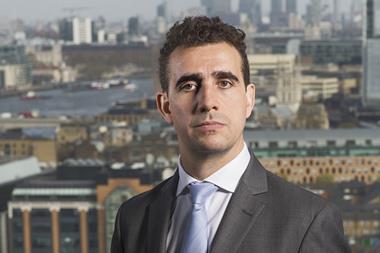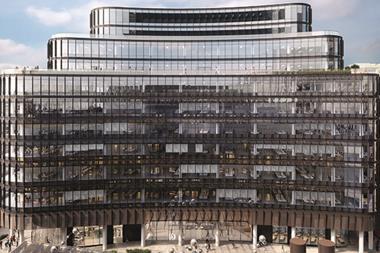
The World Health Organization reports that millions of people in Europe spend over 90% of their time indoors.
It is therefore not surprising that buildings underpin our physical and mental wellbeing. As the boundaries blur between work and leisure, there is growing interest in ‘healthy’ buildings too. This is about employers recognising that the right working environment can help them attract and retain talent as well as improve productivity.
Many studies show that access to greenery and other natural elements boosts mental health and productivity. Enhanced air quality has been linked to improved cognitive function.
Shared spaces and recreational opportunities encourage social relationships, one of the most powerful drivers of human health and wellbeing.
At 100 Liverpool Street in Broadgate, London, we are currently on site with construction to deliver a world-class building providing high-quality office and retail space.
With wellbeing in mind, we have partnered with the International WELL Building Institute to test its new WELL Certification – and we are aiming for 100 Liverpool Street to be one of the first Core and Shell WELL-certified buildings in London.

WELL Certification focuses on innovations to promote health and wellbeing through the quality of the physical environment and by facilitating healthy lifestyles. The certification has provided a very useful framework and I would encourage developers and landlords to ask themselves these seven questions, which are centred on the WELL design concepts:
- Air: Can we use ventilation to improve levels of fresh air?
- Light: Will we get sufficient natural daylight inside the building?
- Fitness: How do we encourage active lifestyles through design?
- Water: Can we guarantee consistently high-quality drinking water?
- Nourishment: Can we encourage healthier food choices through our retail mix?
- Comfort: How can we minimise noise, regulate temperatures and provide easy access for everyone?
- Mind: How do we use the landscape to connect people with nature and green spaces
These tenets have provided a useful framework for our architects, designers and engineers. Together, they have incorporated all seven WELL concepts into the design at 100 Liverpool Street.
”Workplaces have an important role to play in preventing ill health before it occurs”
A smart ventilation system has been put in place with carbon dioxide sensors, which pump in 16 litres of fresh air to the building per person per second, and we have landscaped terraces on five levels to connect people with nature.
Workplaces have an important role to play in preventing ill health before it occurs. Active design can get people moving around more, reducing their risk of cardiovascular disease, depression and other health issues. The built environment can and should be used as an instrument to improve health, happiness and productivity.
WELL has real potential to be good news for people and their employers, supporting not only employee wellbeing but satisfaction and productivity. When we spend so much of our time indoors, the thoughtful design of buildings and the surrounding environment demonstrate that an employer really cares about the wellbeing of its people. It is an issue becoming ever more important as the war for talent becomes more competitive.






























No comments yet